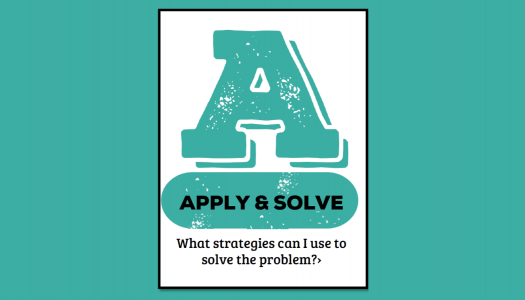How Was PATH Created?
Join Our Community
Access this resource now. Get up to three resources every month for free.
Choose from thousands of articles, lessons, guides, videos, and printables.
Early on in our work of creating the math menu, we recognized that just as in ELA, we needed a menu that could be used by all students, at multiple grade levels. For this reason we immediately saw the importance of asking ourselves, What specific strategies do students need to become proficient at math?
In our quest to answer this question, we took a closer look at the Standards for Mathematical Practice. These standards seek to explain specific ways that students can (and should) be interacting with math concepts—and how, without a balance of mathematical procedure and mathematical understanding, they are often limited in their ability to engage with those concepts.
Using these Standards for Mathematical Practice, we were able to identify 20 specific skills that all students can use to help them become fluent in math. We organized these skills into four components that make the acronym PATH:
Plan (and analyze)
Apply (and solve)
Tools (for application)
How? (justify).
PATH is an acronym that teachers can use with their students to help them remember that the skills on the math menu support them with finding an entry point into a problem or concept. Additionally, these specific strategies support students in becoming flexible in their thinking about mathematics, versus being limited to one specific mathematics procedure for arriving at a solution.The Math PATH System provides teachers with a way to maximize student understanding of four key components of becoming a successful mathematician.
The Menu breaks each of these components into significant strategies that support each goal. Posted on the classroom wall and built throughout the year, it serves as a visual reminder of whole-class instruction as well as individual student goals.
Teachers use the Math PATH System to assess, instruct, and monitor student progress. It provides tools for constructing group and individual lessons that provide just-in-time instruction, ensuring that all students reach their potential. The system helps teachers
- establish and track the strengths and goals of each child by providing a structure for conferring;
- organize assessment data and use it to inform instruction;
- maximize time with students in whole-group, small-group, and one-on-one settings;
- create flexible small groups focused on specific reading needs;
- engage students, fostering ownership and accountability to reach goals; and
- develop a common language to talk about reading development and proficiency.
The Math PATH System is delivered through the structure and framework of the Math Daily 3, which builds behaviors of independence and stamina.








